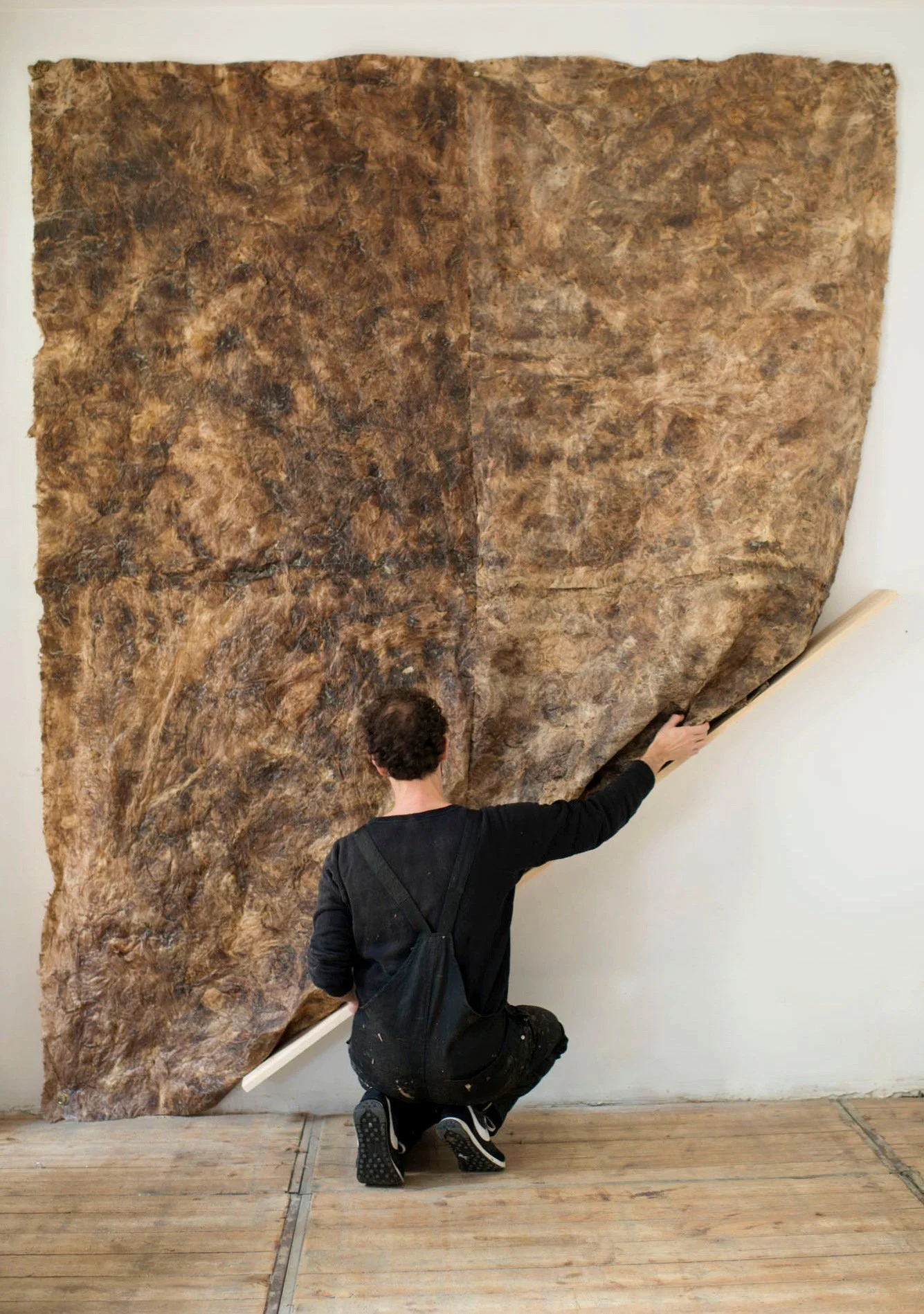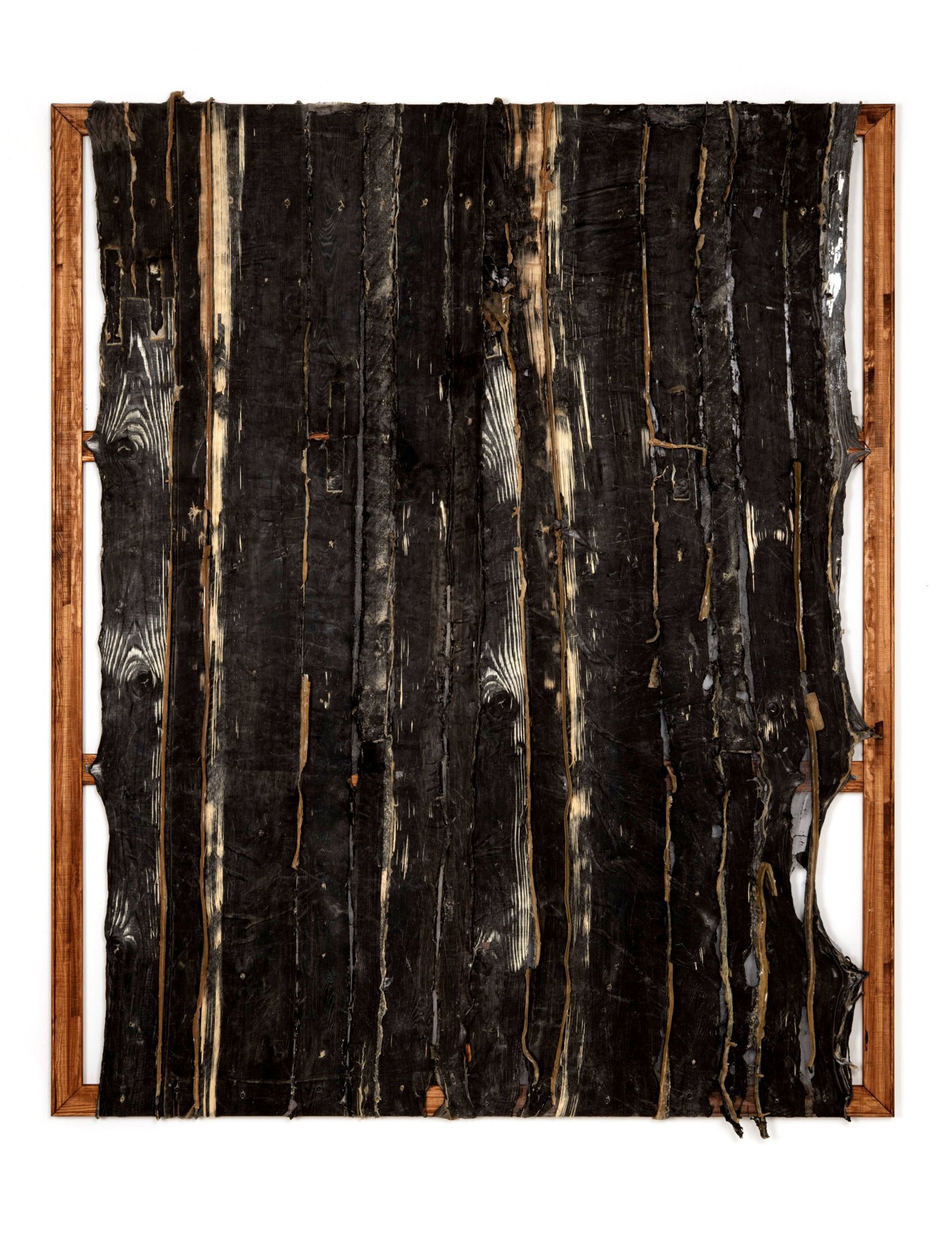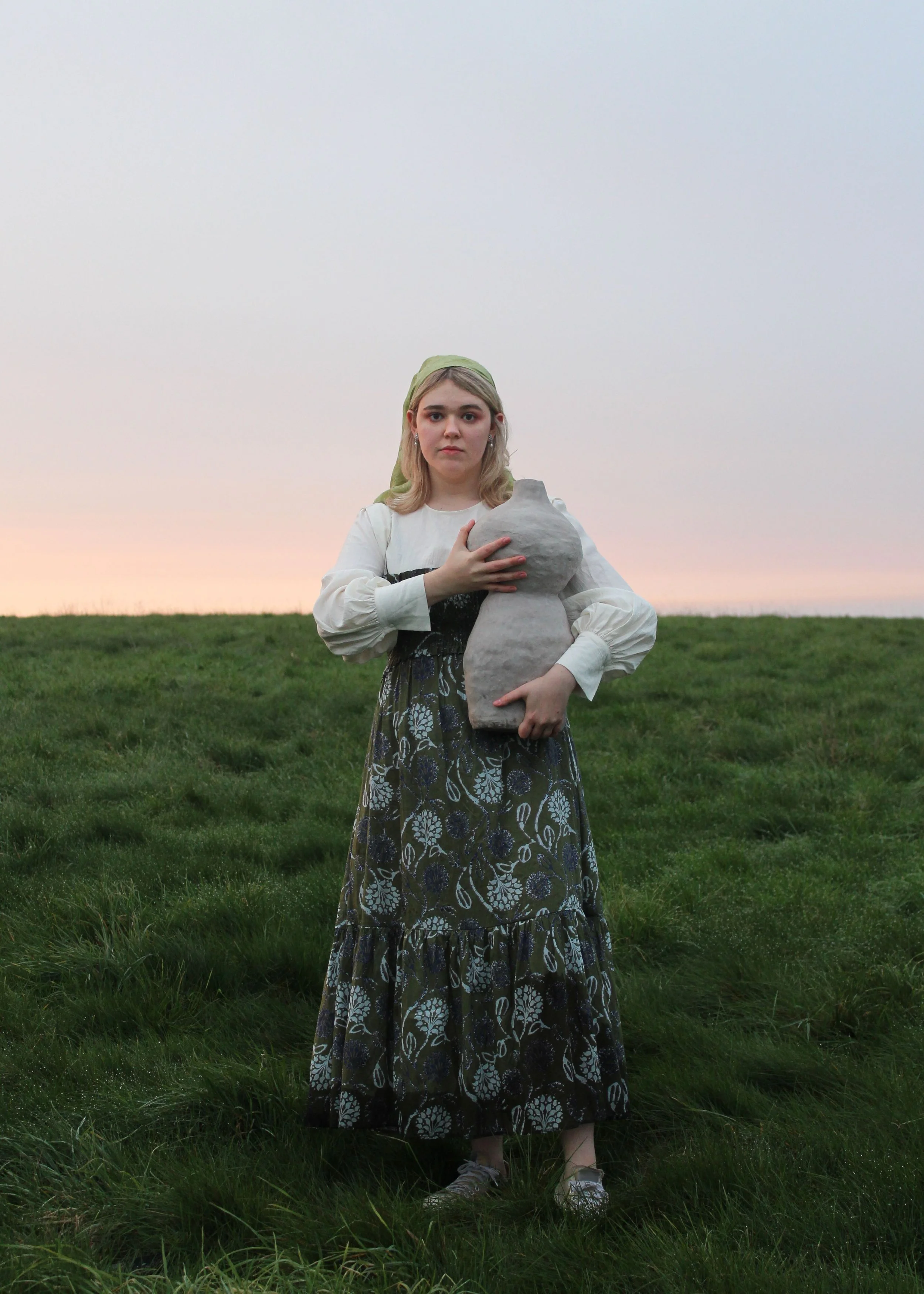10 Questions with Luc Vandervelde
Luc Vandervelde Lux is a Belgian artist. Born 1969 in Leuven, he currently lives and works in Brussels. He has received several Scholarship for visual artists from the Flemish Government and exposed in China, USA, and Europe with a long collaboration with gallery Stephane Simoens Contemporary Fine Art in Knokke (Belgium).
Luc Vandervelde - Portrait
ARTIST STATEMENT
In the artwork of Luc Vandervelde Lux, nothing seems to be lost. While in his earlier career, the focus was on figurative, photo-realistic paintings, abstract collages on paper and canvas, and social documents from travel reports, more recently materials themselves have become the core of his artistic practice. This shift has come from seeking a foothold when everything changes quickly and the desire for a reappraisal of materials. As a result, he has devised a way to weave a multitude of patterns and textures together to tell a new story.
No material escapes the eye of the artist: carpets, fabrics, plastic, felt, jute, rubber, knitwear, metal or wooden frames, remnants of roofing, tape, or moving blankets are processed in his visual universe. It is a multi-layered world where found objects are freely brought together to relate to each other in new harmony. While some materials are bought or collected, others are found on the street or on the way to the studio.
What ultimately ends up in a work, he decides intuitively and on a purely visual basis. A certain coincidence remains so that it is never certain what he will find or what he will use. There is, therefore, no preconceived plan, no scenario. Every installation is created by starting to work and continuing to work. Luc Vandervelde Lux follows the logic of each specific material that contributes to how the work is designed. In doing so, he unravels the structures of the discarded materials by dismantling them, and in doing and making, in building or connecting the different layers, he manifests himself consciously: recycled remnants are converted into aesthetic compositions.
The experimental process remains visible: each part shows a fragment of a memento, an anonymous presence of stories or histories. Own memories are intertwined with unknown lives, and personal experiences with universal dimensions. Every work by Luc Vandervelde Lux is like visual memory, a tangible witness to memories that have not been lost but have been transformed or distorted. They look like archaeological layers that are sometimes palpable but inaccessible or just open and exposed. A revaluation takes place through the recovery of materials by reconstructing possible unknown storylines. Without making moral propositions, every transformed work becomes an object of reflection representing certain values and inviting us to position ourselves in relation to these values.
Untitled (Eventually Things fall Apart), mixed media on wooden frame, 200x180 cm © Luc Vandervelde
INTERVIEW
Let's start with your background and formative years. Could you tell our readers how you started experimenting with images?
I grew up in the countryside in a working-class family. Not exactly the ideal environment to come into contact with art. Music inspired my interest in art, and especially visual art. As a child, I listened a lot to the Velvet Underground, so Andy Warhol was close by. When I moved to the city at 18, a whole cultural world opened up. I'm an autodidact and started as a photo-realistic painter. My works were social documents from travel reports. Later I evolved into abstract collages on paper and canvas, as I always felt that the realistic image limited my creativity. At a certain moment, I needed to take distance from figurative art to free myself from the realistic image.
What do you wish you knew about contemporary art before you got started?
As little as possible. The unknown is part of the creativity.
You have had many different experiences in your life and career. What is your favorite so far as an artist?
Two important experiences formed me into the artist I am today. First, when I was traveling in Uzbekistan, I met a local NGO. The purpose of their operation was to preserve the local art. They invited me to teach in a local school for a while, an introduction to contemporary art. Moniaq is a fishing village that was once on the shore of the Aral Sea, but now, as a result of irrigation, the sea has dried up and retreated more than 100 km. The boats that were once used there have been left behind, scattered in a desert-like landscape. The locals make patchwork blankets as daily utensils on which they eat, lie and sleep, so I took Christo as a reference, and together with the children, we packed one of the abandoned boats with patchwork.
In 2013 I received a grant from the Flemish committee to support the development and growth of their oeuvre. As a result, I stayed in China for five months in preparation for an exhibition. It was a very important turning point in my œuvre.
Untitled (9:22am), processed textiles, size variable © Luc Vandervelde
Untitled (Eventually Things fall Apart), mixed media on iron frame, H.50 cm © Luc Vandervelde
Can you tell us about the process of creating your work? What aspect of your work do you pay particular attention to?
I used to work with an exact plan. However, the more abstract my work became, the more the plan disappeared. Therefore, now there is no preconceived plan, no scenario. Every installation is created by starting to work and continuing to work. I follow the logic of each specific material that contributes to how the work is designed. In doing so, I unravel the structures of the discarded materials by dismantling them, and in doing and making, in building or connecting the different layers, each element manifests itself consciously: recycled remnants are converted into aesthetic compositions.
Your works are vibrant and tridimensional; how did you come up with this way of creating your works?
A lot depends on the source materials or objects themselves and the process of working with them to distract them. To separate the layers, I research the origin of the materials and afterward put them through an artistic transformation process, where a new energy field is created to reach beyond the reuse of materials.
Both the natural wear and 'destructive process' of my source materials have permanently put an end to the feeling of kitsch, and I introduce a discursive function. The transformed materials become an object of reflection, representing certain values and inviting us to position ourselves vis-à-vis these values. Materials and memories are given a new purpose and destination in the human experience. All its basic functions, whether sentimental, decorative, or functional, are also integrated into the new work. The transformation from a worn utensil into a piece of art represents both a break and continuity.
Untitled, Jutte and clay on wooden and metal frame, 153x113 cm © Luc Vandervelde
What is the most challenging part of your work? And where do you find inspiration?
The most challenging part is the learning process; how to make them work in the studio. How am I going to present it, and how will I combine it. It's an ongoing investigation like a scientist in his laboratory. I'm inspired by the daily things around me. Sometimes I find them on the street, people offer them to me, or I buy certain materials. What attracts me is the story or the history behind these materials. They are fragments of a moment, an anonymous presence of those stories. Sometimes they are personal, with universal dimensions, or stories from unknown lives - like 'a visual memory'.
They look like archaeological layers that are sometimes palpable but inaccessible or just open and exposed. A re-evaluation takes place through the recovery of materials through the reconstruction of possible unknown storylines.
Recently we have been relying more and more on digital presentations, like fairs and exhibitions. What are your thoughts on these types of presentations? Do you think these are good opportunities for artists?
This aspect is very new for me. Certainly, with my kind of art, it's important that you see it in real space and time. A picture misses a lot of dimension and character. For example, I have no problem if people touch my work. For digital presentations, I have my own website and Instagram page, and I'm working together with Alfa Gallery in Miami - an artist-run contemporary art space. I like their presentation of artists. We will see if it helps my artistic career move forward!
Untitled (Three Little Bricks), 2019, 130x70x60 cm © Luc Vandervelde
What are you working on now, and what are your plans for the future? Anything exciting you can tell us about?
I have a group exhibition coming up in Brussels with Sophie Van den Bussche, and I'm presenting at Stephane Simoens Gallery (Knokke).
In October 2021, I did a project in Evoramonte, Portugal, in collaboration with Foundation Obras. The purpose of the project was to develop a way to present my work in nature and how this natural environment would interact with the work. Mostly I present my work in a white cube, a very safe environment, but lately, while working in my studio, I felt that the work was ready for a new challenge and new context. I would like to continue this research.
What do you hope to accomplish this year, both in terms of career goals and personal life?
I'm very sloppy when it comes to my career. But being an artist is educating and a challenge that I would like to continue. It makes me happy and a better person.
Finally, what is one piece of advice you would like to give to an emerging artist?
One piece of advice: just follow your instinct.






















